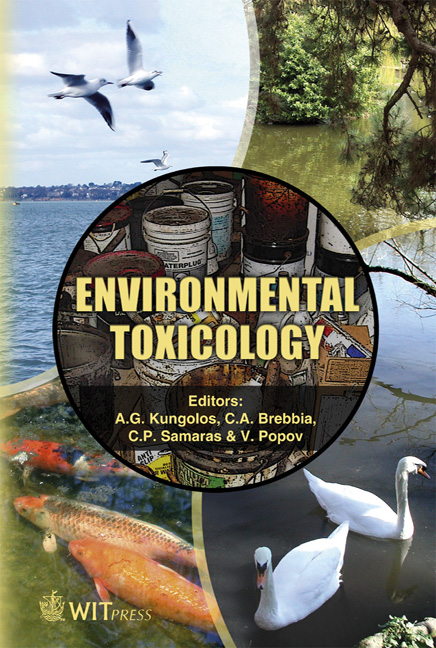Estimation Of Vapour Pressure, Solubility In Water, Henry’s Law Function, And Log Kow As A Function Of Temperature For Prediction Of The Environmental Fate Of Chemicals
Price
Free (open access)
Transaction
Volume
10
Pages
10
Published
2006
Size
581 kb
Paper DOI
10.2495/ETOX060021
Copyright
WIT Press
Author(s)
J. Paasivirta
Abstract
Environmental risk R estimation of a chemical is based on predicting exposure of biota (PEC) in media and harmful effect potency as PNEC from (eco) toxicology. For default emission Eo, numerical relative risk is expressed as Ro = PEC/PNEC. Using the risk limit Ro ≥1, the risk emission is RE = Eo/Ro. PEC can be estimated by the fate modeling. Our FATEMOD model computes the fate of chemicals in an environment defined as a catchment area. In this model, the substance properties (liquid state) of vapour pressure Pl, water solubility S, Henry’s law coefficient H (Pl/S), lipophility Kow, and the reaction half-life times are automatically computed as a function of temperature. This feature is unique, thus far, in fate models. The physical properties in the environmental temperature range are obtained from the equation: Log Prop(i) = Ai – Bi /T (T in degrees Kelvin). We have learnt to determine the coefficients Apl,Bpl (for Pl), As,Bs (for S), Ah,Bh (for H) and Aow,Bow (for Kow) from thermodynamic equations of these properties as functions of molecular parameters and temperature T by dividing the equation into two parts: 1) T absent and 2) T present. The results compare well with expensive direct measurement results and also with results from retention time comparisons by temperature-controlled GC (for Pl) and HPLC (for S). In reasonable risk predictions for variable climates such as in Nordic countries, the ambient temperature cannot be ignored. Examples of temperature-adjusting FATEMOD runs in chemical risk estimations are given. Keywords: degradation rates, physical properties, regional model, relative risk, temperature corrections, thermodynamics.
Keywords
degradation rates, physical properties, regional model, relative risk,temperature corrections, thermodynamics.





